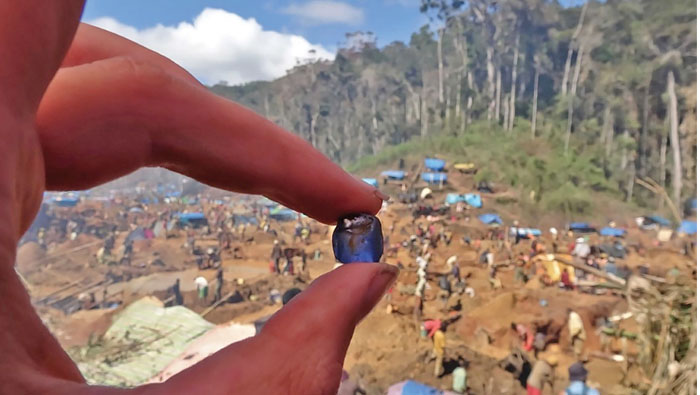
Muscat: Consumers in Oman have been urged by the Ministry of Commerce and Industry (MoCI) to only purchase natural gemstones from specialised stores, rather than from vendors, following incidents in which buyers were defrauded.
Natural gemstone buyers are subjected to various types of fraud by many traders. Keeping in view their high prices, the availability of cheap and imitation stones, as well as fraud, the directorate general of standards and metrology of the MoCI has taken steps to protect consumers of jewellery.
Carrying out provisions of Royal Decree No. 109/2000, the ministry examined 978 samples of precious stones during 2017. It had examined 377 samples in 2016.
“Article 7 of the Royal Decree 109/2000 states, ‘It is not permissible to sell valuable stones unless they are accompanied by a card indicating the name of the stone, its class, weight, colour and quality, in terms of purity, properties, safety from breaking, scratching and any other defects, and the extent of exposure to any kind of treatments or processing’,” said Nasser bin Ashraf Al Balushi, head of the precious stones department and testing laboratory in the Directorate General of Standards and Metrology.
The precious stone testing laboratory will determine the type of treatment for these stones, if any, and issue a certificate bearing the specifications of the precious stone.
The test will be for colour polished stones, diamonds and pearls. That jewellery which contains precious stones, as well as raw and rough stones, is also to be tested, he added.
He noted that this section of the directorate was trying to increase the level of awareness among traders and consumers, along with coordinating with government and private agencies.
Al Balushi said that natural stone remains a natural stone, regardless of its geographic origin. However, it is the geographic source which effects the price. The collectors of precious stones often attach great importance to its geographical origin or country of origin, which has the greatest impact on the price.
The dominant culture from where the precious stone is imported has its impact on their demand. For example, the jade stone was mentioned by Xu Chen in the first Chinese dictionary as a symbol of beauty. Jade has a long history in Chinese civilisation. A number of archaeologists found that some of the pieces made of jade dated back to about 5,000 BC. This is why jade stones in China are costlier than emeralds.
“The best example of the influence of the source is Iranian turquoise. Iranian turquoise traders often import turquoise from Tibet in China and sell it in their markets as Iranian turquoise, perhaps because of the historical background of the stone.
“There are a lot of other examples. Australian opal is higher than Ethiopian opal, which causes Ethiopian opal traders to export gems to Australia and then re-export them to the rest of the world,” Al Balushi said.
Earlier, there was no method to determine the source country of coloured precious stones and diamonds. The determination of the geographical origin of gems or diamonds was based on their quality and appearance, as well as their colour. For example, the very bright red sapphire was called Burmese, even if it was not its source.
“The identification and determination of origin is done using modern high-tech devices. There are some devices and techniques used by some of the world’s top laboratories, including optical analysis by microscope, and spectroscopy in ultraviolet rays visible near infrared rays.
Raman spectrometry uses Raman spectroscopy, chemical analysis by Spectral Laser Spectrum Collapse (LIBS), and Surface Analysis by SEM (scanning electron microscopy).
He said that it was difficult to determine the country of origin because of the continuous emergence of new exporting countries and the high cost of these technologies. For example, the American Institute GIA always lists the country of origin in test reports of stones: red sapphires and emeralds.
Al Balushi said that the misuse of the geographical source of precious stones in marketing and influencing consumer decisions is immoral. He urged consumers to buy from shops specialising in selling these stones and not from travelling merchants or hawkers. These specialised shops in Oman are inspected periodically by specialists of the directorate general of standards and metrology of the Ministry of Commerce and Industry.
He also urged consumers to keep their invoices from these shops, which has the name of the stone and other basic information, and will help in protecting the rights of the buyer. He further said it is important to ensure that the card is attached to the stone, as stipulated in Article 7 of Royal Decree No. 109/2000.
Al Balushi noted that examinations of stones are done in a specialised test laboratory. These labs have technologies and capabilities to assure that the public is not being cheated.